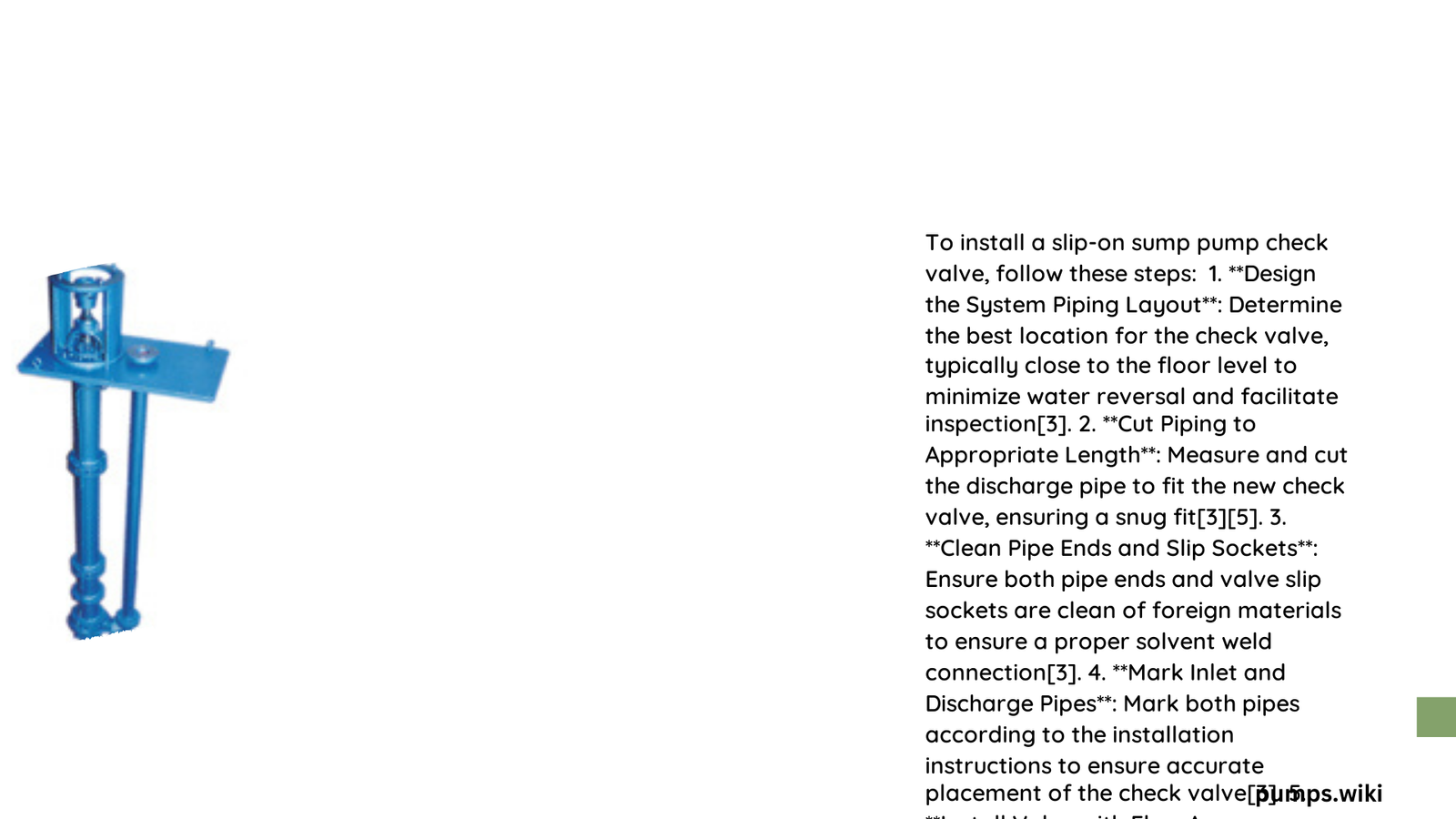Installing a slip-on sump pump check valve is a critical maintenance task that prevents water backflow, protects your pump’s integrity, and ensures efficient drainage system performance. Homeowners and DIY enthusiasts can successfully complete this installation by understanding the precise steps, required tools, and potential challenges. This comprehensive guide will walk you through each stage of the process, providing expert insights and practical recommendations for a seamless check valve installation.
What Tools Do You Need for Slip On Sump Pump Check Valve Installation?
Before beginning the installation, gather these essential tools:
| Tool | Purpose | Recommended Type |
|---|---|---|
| PVC Cutter | Precise Pipe Cutting | Sharp Ratchet-Style Cutter |
| Sandpaper | Surface Preparation | Medium-Grit (120-150) |
| PVC Cement | Secure Connections | Professional-Grade Solvent Cement |
| Measuring Tape | Accurate Measurements | Retractable Metal Tape |
| Protective Gloves | Safety | Chemical-Resistant Nitrile |
| Channel Locks | Pipe Adjustment | Adjustable Plumber’s Wrench |
Why Is Proper Check Valve Orientation Critical?

Correct check valve orientation prevents several potential issues:
- Backflow Prevention
- Ensures water cannot re-enter discharge pipe
- Reduces unnecessary pump cycling
-
Extends pump motor lifespan
-
Directional Flow Management
- Flow arrow must point away from pump
- Horizontal or 45-degree installation recommended for systems handling solids
- Vertical installation suitable for clear liquid systems
How Do You Prepare Pipes for Check Valve Installation?
Pipe preparation involves multiple crucial steps:
- Clean Pipe Ends
- Remove dirt, debris, and oxidation
- Use sandpaper for thorough surface preparation
-
Ensure smooth, clean contact surfaces
-
Measure Discharge Pipe
- Confirm pipe diameter matches check valve size
- Standard sizes range from 1¼ to 1½ inches
- Allow minimum 2 feet of static head for positive sealing
What Are the Step-by-Step Installation Procedures?
Detailed Installation Process:
- Pipe Cutting
- Use precise cutting tool
- Ensure clean, straight edges
-
Remove burrs with utility knife
-
Valve Positioning
- Verify flow direction arrow
- Align with pump discharge
-
Maintain recommended angle
-
Solvent Welding
- Apply PVC cement evenly
- Insert pipe fully into valve socket
-
Hold connection steady during curing
-
Connection Curing
- Allow 4-6 hours for complete bonding
- Avoid water pressure during initial setting
What Maintenance Practices Extend Check Valve Lifespan?
Recommended maintenance includes:
- Quarterly visual inspections
- Check for mineral buildup
- Verify leak-free connections
- Test backflow prevention mechanism
- Clean valve surfaces periodically
What Common Mistakes Should You Avoid?
Critical installation errors to prevent:
- Incorrect flow direction
- Insufficient pipe cleaning
- Inadequate cement application
- Premature system pressurization
- Ignoring manufacturer’s specific instructions
How Can You Troubleshoot Check Valve Issues?
Potential troubleshooting strategies:
- Listen for unusual pump cycling sounds
- Monitor water return in sump pit
- Check for visible leaks around connections
- Verify valve closes completely after pumping
- Consult professional if persistent issues occur
What Are Potential Cost Implications?
| Scenario | Potential Cost |
|---|---|
| Proper Installation | $50 – $150 |
| Professional Installation | $200 – $500 |
| Pump Damage from Improper Installation | $500 – $1,500 |
Conclusion
Successful slip-on sump pump check valve installation requires precision, proper tools, and careful attention to detail. By following these comprehensive guidelines, homeowners can effectively protect their drainage systems and prevent potential water damage.
